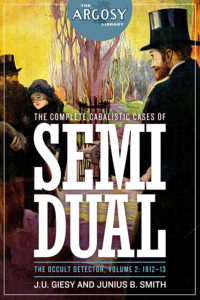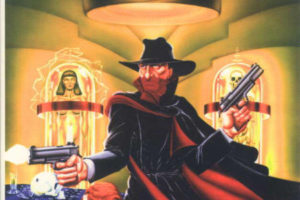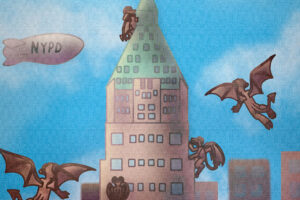 As a fan of occult detectives, I was thrilled to learn of an early one I had never heard of when Altus Press reprinted a collection of the first stories of occult detective Semi Dual, with plans to reprint the whole series.
As a fan of occult detectives, I was thrilled to learn of an early one I had never heard of when Altus Press reprinted a collection of the first stories of occult detective Semi Dual, with plans to reprint the whole series.
Semi Dual is really Prince Abdul Omar of Persia (father, a Persian nobleman; mother, a Russian princess), an astrologer, mystic, telepath, and psychologist. He appeared from 1912 to 1934 in several early pulp magazines, and has never been reprinted.
His name, we learn, of “Semi Dual,” is due to his methods of investigations: “by dual solutions: one material, for material minds; the other occult, for those who cared to sense a deeper something back of the philosophic lessons interwoven in the narrative.”
The series was written by J.U. Giesy and Junius B. Smith, who both lived in Utah. Giesy was a doctor; Smith, a lawyer; and both were interested in astrology. They both wrote for the early pulps, and Giesy had several popular series himself.
Altus Press has now put out the second volume, The Complete Cabalistic Cases of Semi Dual, the Occult Detector, Volume 2: 1912–13, reprinting the next three stories that were serialized between October 1912 and July 1913 in The Cavalier. Now, however, the series is part of Altus’ larger “Argosy Library”, with the same trade dress as the rest, so it now looks different from the first volume. I wish they hadn’t done that, but guess this was expected.
As noted, this one reprints the next three stories: “The Purple Light,” “The Master Mind,” and “Rubies of Doom.” It was interesting that the first was serialized over three issues, the second was done in one issue, and the final in two issues. But in looking at the length of the stories, the first was 80 pages, while the other two were 100 pages. Seems strange on how they broke up the stories in light of their length.
In “The Purple Light,” an apparent suicide is soon discovered to be a murder. Gordon Glace, reporter and narrator of the stories, along with Semi Dual, works to figure out the murder and expose the real culprit, especially after the police grab two innocent people. It was interesting to see mention of the previous story, and Glace commenting that he hadn’t seen Semi Dual since that adventure.
Carrying that forward, “The Master Mind” actually has some characters from previous stories appear, when Glace’s future brother-in-law gets accused of murder and theft from the bank he works at. And, yes, Semi Dual figures it out and exposes the real culprits, with Glace doing the footwork to find the evidence that the police didn’t bother looking for. It was interesting seeing the evidence being found to prove the criminals (finger prints, foot prints, who ordered certain items, etc), considering the time period. And it was this story that Inspector Bryce meets Semi Dual. I hadn’t realized that they didn’t meet in the prior stories.
And the final story in this volume, “The Rubies of Doom,” marks a few changes in the series. Gordon Glace has now married, and in fact is on his honeymoon. With Semi Dual coming along, strangely enough (or Semi Dual is traveling west, and has the newlyweds to accompany him for their honeymoon, if you like). Also Glace is now a partner — with now former police inspector Bryce — in a detective agency housed in the Urania Building where Semi Dual has his home. This detective agency will act as a buffer for people seeking out Semi Dual’s help going forward, as well as to gather the evidence needed by the authorities. It is hinted there have been other cases since the last story.
Set on a Mississippi riverboat heading to St. Louis, this story involves a group of rubies that is to fund a revolution, but are stolen. The thief is murdered, and an innocent girl is accused. But Semi Dual is on hand to expose the true culprit.
In addition to the stories we get a new introduction that delves into the world of 1912, looks at the authors and the stories from the previous volume, as well as the stories in this volume. There is information about the cover art used in the previous volume, and we learn that Semi Dual soon became popular enough that he would be cover featured on several pulps. I expect we will continue to see these intros from Garyn Roberts, which is a great asset.
We also get some vignettes on the authors that appeared in the Argosy back in 1931. However, I have a problem believing Smith’s claim that the pseudoscience of astrology was ever accepted in a court of law as a legit science.
I look forward to the next volume. No idea when it will be or if it will be part of the next set of Argosy Library books.



